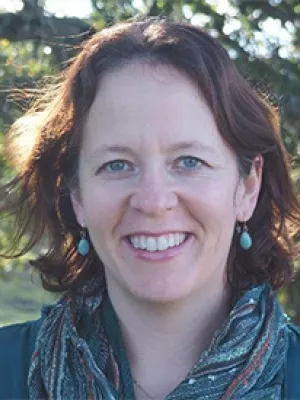
Kimberly Nicholas
Senior Lecturer, Docent

Large-Scale Land Acquisitions as a Driver of Socio-Environmental Change : From the Pixel to the Globe
Storskaliga markförvärv som en drivkraft för sociala och miljömässiga förändringar : Från pixeln till jordklotet
Author
Summary, in English
The four papers of this dissertation investigate the drivers, impacts and feedbacks of large-scale land acquisitions from the general global perspective, to the detailed local case study. Paper I explores the global connectivity of large-scale land acquisitions in terms of virtual land export and import. The land-trade pattern is visualised and analysed as a network, which reveals that a few countries are responsible for providing network connectivity (China, the UK, and the US), while Africa is the most targeted region. We highlight that the network structure is prone to propagate socio-environmental risks and vulnerability for both importers and exporters of land. These results led to the development of Paper II, which is an in-depth analysis of water requirements for crops currently grown on acquired land in Africa. We used a dynamic vegetation model (LPJmL) to model blue and green water requirements of crops in order to identify hotspots of blue water use (irrigation water from e.g. groundwater, rivers, dams) that indicate areas of high risk for water-related conflicts. We found that crops grown on acquired land require more water than traditional crops, and even with the most efficient irrigation system 18% of the land acquisitions would be blue water hotspots. Paper III aims to better understand the local context in which land acquisitions occur, exploring people’s perceptions of change in Kilombero Valley, Tanzania. Participatory methods were used to discuss and visualise perceptions of socio-environmental change, which point to rapid degradation of forests and wetlands. This is explained as a coupled effect of large-scale land acquisitions (farmers are forced off their land and need to find other areas for farming), population growth (more people have to share less land for farming), and areas set aside for conservation (prohibiting expansion of farmland). Paper IV complements and compares the experienced socio-environmental changes with land change detection, using satellite images. We found that local perceptions of farmland expansion to the wetland area align with the land change detection, while narratives of rapid deforestation could not be identified in the satellite images. This underscores the need to integrate qualitative and quantitative methods (so-called mixed methods) in order to find strengths and limitations within scientific knowledge production.
Based on the findings of this dissertation, I suggest that crops grown on acquired land should be edible, and primarily produced to increase local and domestic food security. I also suggest that crops planted should be suitable for that local climate, and low in water requirements in order to avoid water conflicts. If agribusinesses use irrigation, the irrigation systems should be of highest water use efficiency. Consequently, if land acquisitions are to be considered as investments, they must be at the forefront of exploring more sustainable pathways of farming, by accounting for local needs, improving environmental conditions, and applying the latest scientific knowledge, no matter the economic cost.
Department/s
- Dept of Physical Geography and Ecosystem Science
Publishing year
2018-08
Language
English
Full text
- Available as PDF - 18 MB
- Available as PDF - 31 MB
- Download statistics
Document type
Dissertation
Publisher
Lund University, Faculty of Science, Department of Physical Geography and Ecosystem Science
Topic
- Physical Geography
Keywords
- Land system sience
- socio-environmental change
- telecoupling
- scale
- co-production of knowledge
- participatory art project
- network science
- blue and green water
- Africa
- Land grabbing
- Remote sensing
Status
Published
Research group
- LUCID - Lund University Centre of Excellence for Integration of Social and Natural Dimensions of Sustainability
Supervisor
- Kimberly Nicholas
- Jonathan Seaquist
ISBN/ISSN/Other
- ISBN: 978-91-85793-94-5
- ISBN: 978-91-85793-93-8
Defence date
14 September 2018
Defence time
10:15
Defence place
Lecture hall “Världen”, Geocentrum I, Sölvegatan 10, Lund
Opponent
- Line Gordon (Associate professor)